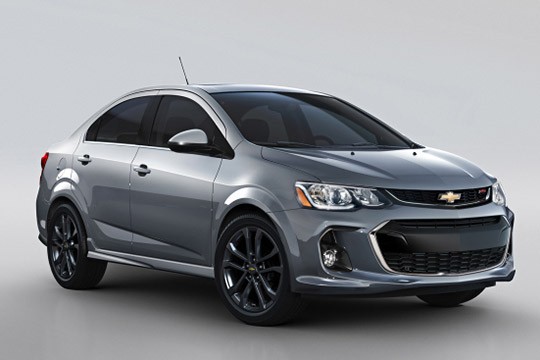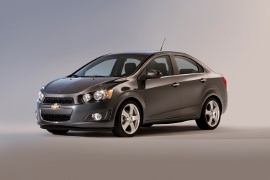CHEVROLET Sonic Sedan Models/Series Timeline, Specifications & Photos
First production year: 2011
Engines: Gasoline, Diesel
The Chevrolet Sonic released in 2015 was designed to replace the Aveo. It was available as a sedan or a hathback, both models having quite a nice look.
The Sonic was inspired by motorcycle styling, fact to be noticed at the headlights’ design, as well as the center console inside the cabin.
Even though the Sonic was a budget car, it drove well, the fuel consumption was reduced and even came with a 6-speed automatic transmission. The cabin was well isolated, offering a pleasant long trip.
The Chevrolet Sonic was give a 5-star rating by the National Highway Safety Administration – a top safety pick award. It was equipped with blind spot mirrors and an optional crash avoidance system. Ten airbags were part of the standard equipment.
As available optionals, the user could choose keyless entry, a 7-inch color touchscreen for the infotainment system, voice recognition, 4G LTE Wi-Fi (Wi-Fi Hotspot) and bluetooth.
The car’s price started at $14.000 and we think the Sonic was more of a bargain sporty sedan. It was equipped with a base 1.8-liter engine developing 138 hp or a more efficient engine choice, a 1.4-liter naturally aspirated turbocharged engine.
An sportier version of the Sonic was also brought to the public under the nameplate of Sonic RS – hatchback version only – a vehicle that featured a lowered suspension, redesigned exhaust, a nice flat-bottomed steering wheel and sport seats as well.
Also known as the Aveo Sedan in Europe, the Sonic was the car that aimed to put more people behind a wheel that sported a Chevy badge and was not a hatchback.
Since the car was built on top of an old Daewoo platform, it was cheap to produce and, as a consequence, lower priced. Thus, apart from fleet owners, the Sonic was an excellent commuter vehicle, at least in terms of running costs. And that mattered for many people, especially during the recovering hard years that followed the financial crisis that drained GM's bank accounts.
GM's design department created the sedan version for those looking for a small-sized family sedan. While the front fascia was shared with its hatchback sibling, featuring four round headlights and a horizontally-split grille between, the profile was different. Its ascending side lines offered a dynamic view for the small sedan, but due to its short overall length, it looked shrunk and too tall. Depending on the trim level, the Sonic sedan was available with 17" light alloy wheels. At the back, the short trunk lid was adorned with a chromed bar above the license plate and was flanked by corner-mounted taillights.
Inside, there were not too many surprises regarding the budget-friendly materials used. Still, it featured standard AC, central locking, and stereo. In addition, the trunk was huge for its class, with a total volume of 502 liters (17.7 cu-ft).
The Sonic was available for the North American market with either a 1.8-liter naturally-aspirated engine or a 1.4-liter turbocharged powerplant. The former version was paired with a five-speed manual fitted as standard or a six-speed automatic as an option, while the latter was an exclusively five-speed manual affair.

